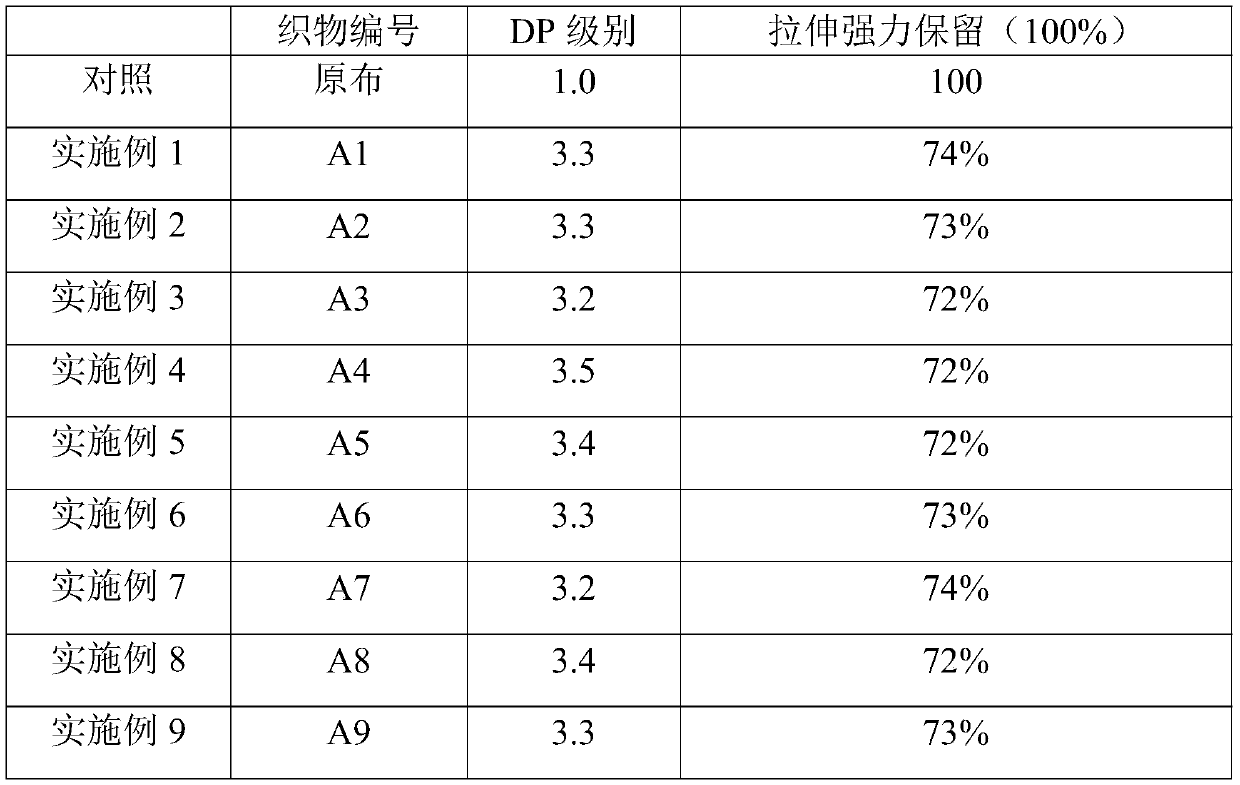In-situ wash-and-wear finishing method of cotton fabric by acrylic acid and glyoxal
A non-iron finishing and glyoxal technology, which can be used in fiber processing, plant fibers, textiles and papermaking, etc., can solve the problems of fabric strength damage and achieve good non-iron effect.
- Summary
- Abstract
- Description
- Claims
- Application Information
AI Technical Summary
Problems solved by technology
Method used
Image
Examples
Embodiment 1
[0042] Add 11 parts by weight of ethanol to 100 parts by weight of water, add cotton fabric (the mass ratio of cotton fabric to water is 1:6), and stir at 50° C. for 20 minutes. 13 parts by weight of acrylic acid was added, followed by stirring at 50° C. for 30 minutes. Next, under ultrasonic stirring, 3 parts by weight of glyoxal, 3 parts by weight of maleic acid salt and 3 parts by weight of ammonium persulfate were sequentially added, the temperature was raised to 90° C., and the reaction was kept for 60 minutes. Then the above-mentioned treated cotton fabric is taken out, washed with water, and dried in the air, so as to obtain the non-ironing cotton fabric A1.
Embodiment 2
[0044] Add 10 parts by weight of ethanol to 100 parts by weight of water, add cotton fabric (the mass ratio of cotton fabric to water is 1:5), and stir at 40° C. for 30 minutes. 10 parts by weight of acrylic acid was added, followed by stirring at 40° C. for 60 minutes. Next, under ultrasonic stirring, 5 parts by weight of glyoxal, 2 parts by weight of fumarate and 4 parts by weight of ammonium persulfate were sequentially added, the temperature was raised to 80° C., and the reaction was maintained for 90 minutes. Then the above-mentioned treated cotton fabric was taken out, washed with water, and dried to obtain the non-ironing cotton fabric A2.
Embodiment 3
[0046] Add 12 parts by weight of ethanol to 100 parts by weight of water, add cotton fabric (the mass ratio of cotton fabric to water is 1:7), and stir at 60° C. for 10 minutes. 15 parts by weight of acrylic acid was added, followed by stirring at 60° C. for 30 minutes. Next, under ultrasonic stirring, 4 parts by weight of glyoxal, 4 parts by weight of itaconate and 2 parts by weight of ammonium persulfate were sequentially added, the temperature was raised to 100° C., and the reaction was kept for 30 minutes. Then the above-mentioned treated cotton fabric is taken out, washed with water, and dried in the air, thereby obtaining the non-ironing cotton fabric A3.
PUM
 Login to View More
Login to View More Abstract
Description
Claims
Application Information
 Login to View More
Login to View More - R&D
- Intellectual Property
- Life Sciences
- Materials
- Tech Scout
- Unparalleled Data Quality
- Higher Quality Content
- 60% Fewer Hallucinations
Browse by: Latest US Patents, China's latest patents, Technical Efficacy Thesaurus, Application Domain, Technology Topic, Popular Technical Reports.
© 2025 PatSnap. All rights reserved.Legal|Privacy policy|Modern Slavery Act Transparency Statement|Sitemap|About US| Contact US: help@patsnap.com


